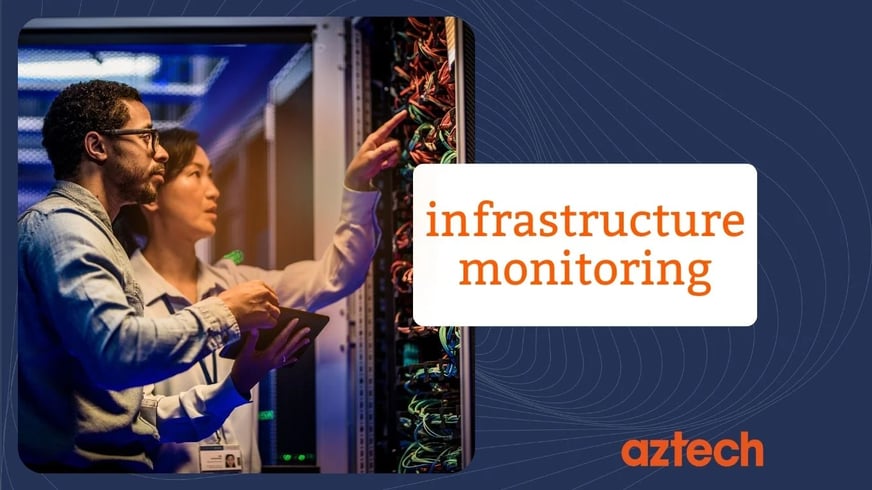
Contents
Everything you need to know about Infrastructure Monitoring!
Infrastructure monitoring is a vital aspect of any IT system performance, as infrastructure monitoring system helps to ensure the availability, performance, and security of the network, servers, applications, operating system, and devices.
However, with the increasing complexity and diversity of IT environments, it can also be a challenging and time-consuming task.
In this blog post, you will get to know what infrastructure monitoring is, how it works, and what are the challenges which can come along with it.
Also, we will share with you some of the best practices, benefits, tools, and trends in proactive monitoring.
What is Infrastructure Monitoring?
In simple terms, infrastructure monitoring refers to the process of keeping track of the health of an organisation’s IT infrastructure performance.
This involves monitoring infrastructure components such as hardware, software, network devices, servers, virtual machines, containers, databases, applications, and other backend components which are responsible for running the organisation's digital operations.
Why is Infrastructure Monitoring Important?
Monitoring system is important because application downtime and service degradation can result in user churn, significant revenue loss and damage to a company’s reputation.
Infrastructure monitoring system can encompass a range of different tools and techniques, including monitoring software and operating systems, cloud services, network monitoring, server monitoring, database monitoring and other backend components.
By monitoring infrastructure in real-time, businesses can maintain high availability, reduce downtime, improve performance, and resource utilisation.
How Does Infrastructure Monitoring Work?
Infrastructure monitoring works by continuously collecting data from various traditional and cloud-native components, to monitor ephemeral infrastructure components of an organisation’s infrastructure and analysing this data to assess the systems’ performance, availability, health, and resource utilisation.
Let’s understand how infrastructure monitoring works:
Data Collection by Different Backend Components
Network Monitoring
Network infrastructure monitoring is the process of collecting data about a network's performance and availability.
These monitoring metrics can be used to detect problems in the networks’ resources, such as slowdowns or outages, and to identify trends.
Network monitoring platforms typically use software tools to collect data about the network devices, such as bandwidth usage, latency, packet loss, and throughput.
Server Monitoring
Server monitoring is the process of collecting and monitoring data from on premise physical servers.
This data can be used to detect problems in the server, such as slowdowns or outages.
Server monitoring platforms typically use infrastructure monitoring software to collect data from server's hardware resources, such as CPU usage, memory usage, disk space usage, data center and network traffic.
Application Monitoring
Application monitoring is the process of collecting and monitoring data about an application's performance and availability.
This data can be used to detect problems with an application, such as slowness or errors, and to identify trends that can help to improve its performance.
Application monitoring platforms typically use software tools to collect and monitor system data about an application's code execution time, database queries, API calls, web requests/responses times etc.
Cloud Infrastructure Monitoring
Cloud Infrastructure Monitoring is the process of collecting data from cloud environments like databases, servers, and networks.
By monitoring cloud infrastructure, site reliability engineers can detect and troubleshoot issues at data center, improve uptime, and enhance overall efficiency.
Cloud Infrastructure Monitoring tools provide real-time data, prioritise alerts, and insights, enabling teams to identify and fix performance issues proactively.
These solutions also help in tracking costs and making informed decisions that can optimise cloud infrastructure utilisation.
Analysing the collected data
Once the data has been collected, it is carefully analysed to reveal valuable trends and patterns.
This process involves utilising various tools and techniques, including filtering, querying, statistical analysis, machine learning, and anomaly detection.
Alerting & Baselining
Alerting and baselining is an important part of infrastructure monitoring platform because they allow administrators to quickly respond when something goes wrong.
They are triggered when certain conditions are met, such as CPU utilisation exceeding a threshold or when an application error occurs.
These alerts & notifications can be sent via email, SMS, Slack messages, or other methods so that administrators can review baseline metrics and act quickly.
Automated Remediation
Automated remediation is another important part of infrastructure monitoring program because it allows administrators to take corrective action without having to manually intervene.
Automated remediation works by automatically taking corrective actions when certain conditions are met, such as restarting a service if it becomes unresponsive or scaling up resources if there is high demand.
Automated remediation helps ensure that systems stay running smoothly without requiring manual intervention from administrators.
Types of infrastructure monitoring
Infrastructure monitoring is broadly classified into 2 types:
- Agent-based monitoring
- Agentless monitoring
Agent-based monitoring
Agent-based monitoring is a method of observing and managing the performance of IT systems, such as servers, applications, network devices, and other backend components, by installing lightweight software layer (known as an “agent”) directly on the target system. The agent collects relevant telemetry data from the system and sends it to the monitoring server.
Agentless monitoring
Agentless monitoring does not require the installation of any software agents. Instead, agentless monitoring capabilities rely on technologies such as Simple Network Management Protocol (SNMP), Windows Management Instrumentation (WMI), and Hypertext Transfer Protocol (HTTP) to collect data from the monitored systems.
Check the difference between both in the below image:
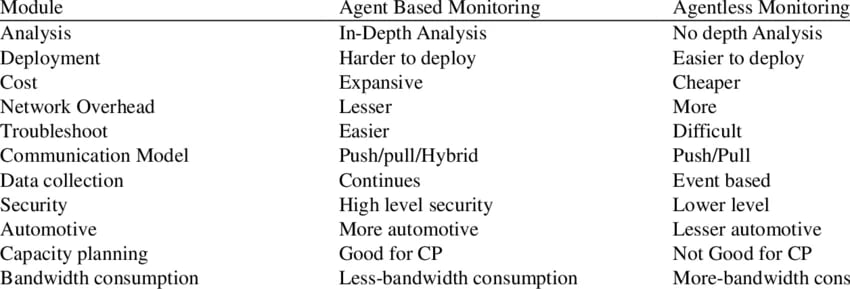
What are the benefits and challenges of infrastructure monitoring?
Benefits of infrastructure monitoring
Improved system availability: Infrastructure monitoring helps to detect issues in real-time and alert IT teams to take corrective action before they escalate into major problems. This helps to minimise downtime and ensure that systems are always available when needed.
Increased efficiency: By monitoring the performance of infrastructure components, organisations can identify areas for improvement and optimise their systems to run more efficiently.
Better security: Infrastructure monitoring tools can help to identify security threats and vulnerabilities in real-time, allowing IT teams to take immediate action to prevent data breaches and other security risks.
Cost savings: By identifying and resolving issues before they become major problems, infrastructure monitoring tools can help to reduce the costs associated with downtime, system failures, and other IT-related issues.
Challenges of Infrastructure Monitoring
Here are some of the most common challenges that organisations face when it comes to infrastructure monitoring:
Growing infrastructure: As organisations grow, so does their IT infrastructure. Keeping track of all the devices and applications that make up the IT ecosystem can be challenging. Monitoring each of them can be even more laborious. If the monitoring tool or team is unable to get true performance monitoring, it might as well stop monitoring at all. With this complexity, it can get harder to evaluate the true performance and identify problems before they get bigger.
Legacy monitoring tools: Many organisations use legacy monitoring tools that cannot deal with growing infrastructure, or the new kinds of technologies constantly being introduced in the IT ecosystem. These tools may not be able to pull their weight and monitor the complex route of operations that essentially serves as the backbone of the whole organisation.
Cultural silos: Dev and Ops teams may use different monitoring tools, which can lead to disagreements about which performance issues to fix and how to fix them. This can create cultural silos between teams, making it difficult to achieve a unified approach to infrastructure monitoring.
Infrastructure Monitoring vs Infrastructure Management
Here are the major differences between Infrastructure Monitoring and Infrastructure Management:
Infrastructure Monitoring is the process of tracking, analysing, and managing the various components of an IT infrastructure performance, including servers, networks, applications, and databases. It involves the use of software tools to detect issues in real-time and alert IT teams to take corrective action before they escalate into major problems.
Infrastructure Management is the process of organising and coordinating the activities of a business in order to achieve defined objectives. It involves the use of various tools and techniques to optimise the performance of IT infrastructure components and ensure that they are aligned with the organisation’s goals.
Infrastructure monitoring is a subset of infrastructure management.
While infrastructure metrics focus on tracking and analysing the performance of infrastructure components, infrastructure management is a broader concept that encompasses a range of activities, including capacity planning, security management, service level management, and more.
Infrastructure metrics are automated most of the time, as a monitoring tool is collecting, analysing, and reporting all the data. Management is not an automated process with set procedures. It’s rather more dynamic and spontaneous, as the decisions taken are based on the performance data and database metrics.
Infrastructure Monitoring Best Practices
Here are 8 best practices that can help organisations to optimise their infrastructure monitoring:
1. Identify and prioritise core services
Identify the most critical services and applications in your infrastructure and prioritise their real time monitoring. This will help you to focus on the most important areas and ensure that you are allocating your resources effectively.
2. Use an APM tool to monitor critical applications
Application Performance Monitoring (APM) tools can help you to monitor the performance of critical applications and identify issues before they impact end-users. APM tools can also help you to optimise application performance and improve the user experience.
3. Audit users and their activities
Monitor user activity to identify potential security threats and ensure that users are following best practices. This can help you to prevent data breaches and other security incidents.
4. Implement real-time alerting
Real-time alerts can help you to identify issues as soon as they occur and take corrective action before they escalate. Real time monitoring solutions can help you to minimise downtime and ensure that your systems are always available when needed.
5. Keep track of software licenses and maintenance contracts
Ensure that you are keeping track of software licenses and maintenance contracts to avoid any compliance issues. This can help you to avoid costly fines and penalties.
6. Continuously monitor your network
Monitor your network continuously to identify potential issues and ensure that your systems are running smoothly. This can help you to optimise your network performance and improve the user experience.
7. Establish SLA thresholds and triggers
Establish Service Level Agreement (SLA) thresholds and triggers to ensure that you are meeting your service level commitments. This can help you to maintain customer satisfaction and avoid any penalties for failing to meet SLAs.
8. Let automation do the heavy lifting
Use automation to streamline your infrastructure monitoring processes and reduce the workload on your IT teams. This can help you to optimise your resources and improve your overall efficiency.
Infrastructure Monitoring Use Cases
Here are some common use cases for infrastructure monitoring:
Pre-construction survey, search, and routing: Infrastructure monitoring tool can be used to survey and search for appropriate locations for new infrastructure. It can also help identify the best routes for laying down cables and pipes.
Monitoring of construction while underway, or historically: Infrastructure monitoring tools can help monitor the progress of construction projects and identify any issues that may arise during the process. It can also be used to monitor the historical performance of infrastructure.
Monitoring for maintenance: Infrastructure monitoring tool can help identify potential issues before they become major problems. This can help reduce downtime and improve the overall performance of the system.
Monitoring of vegetation around power lines: Infrastructure monitoring tool can be used to monitor vegetation growth around power lines and identify any potential hazards.
Monitoring for insurance purposes: Infrastructure monitoring tools can help insurance companies assess the risk associated with insuring infrastructure. It can also help identify potential issues that may lead to claims.
What are the Best Infrastructure Monitoring Tools?
There are many infrastructure monitoring tools available, both free and paid.
Here are some of the most popular ones:
SolarWinds Network Performance Monitor: This tool checks device health statuses with SNMP procedures and installs on a Windows Server. It offers a 30-day free trial.
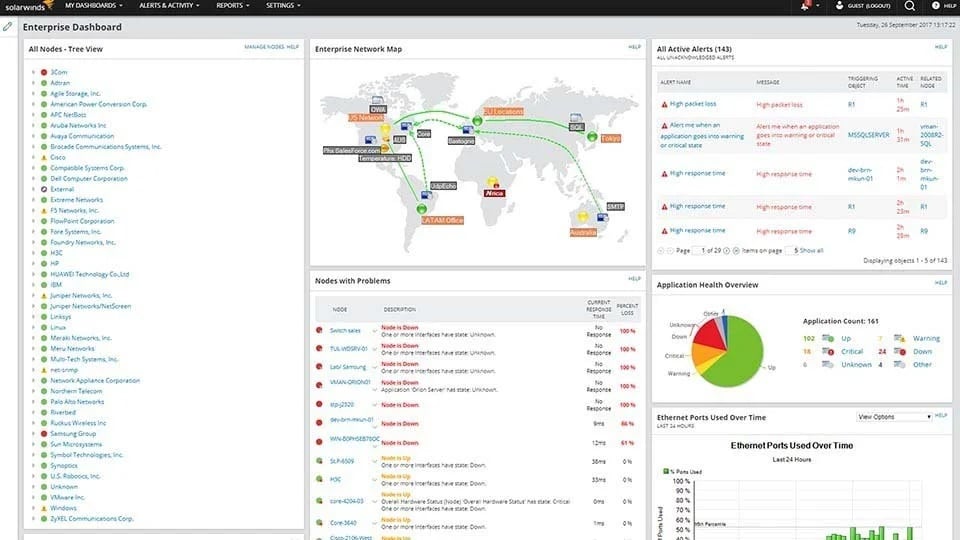
Datadog Infrastructure Monitoring: A cloud-based system monitor that supervises the operations of network traffic and servers. It can be combined with an application monitor to gain deeper insights into traffic. It offers a 14-day free trial.
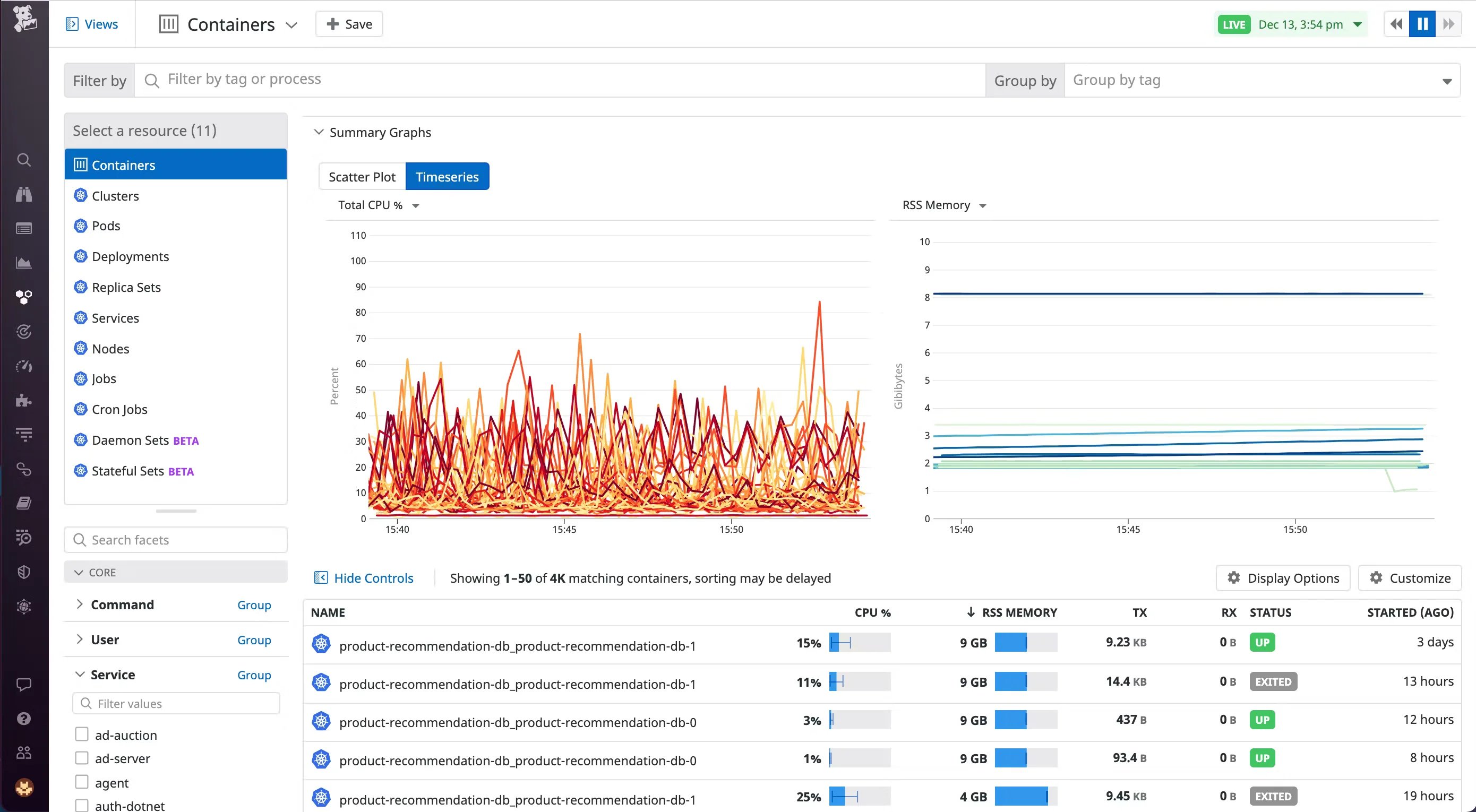
Sematext Infrastructure Monitoring: A SaaS platform that monitors infrastructure on-premises, on remote sites, and on the cloud. It offers a 14-day free trial.
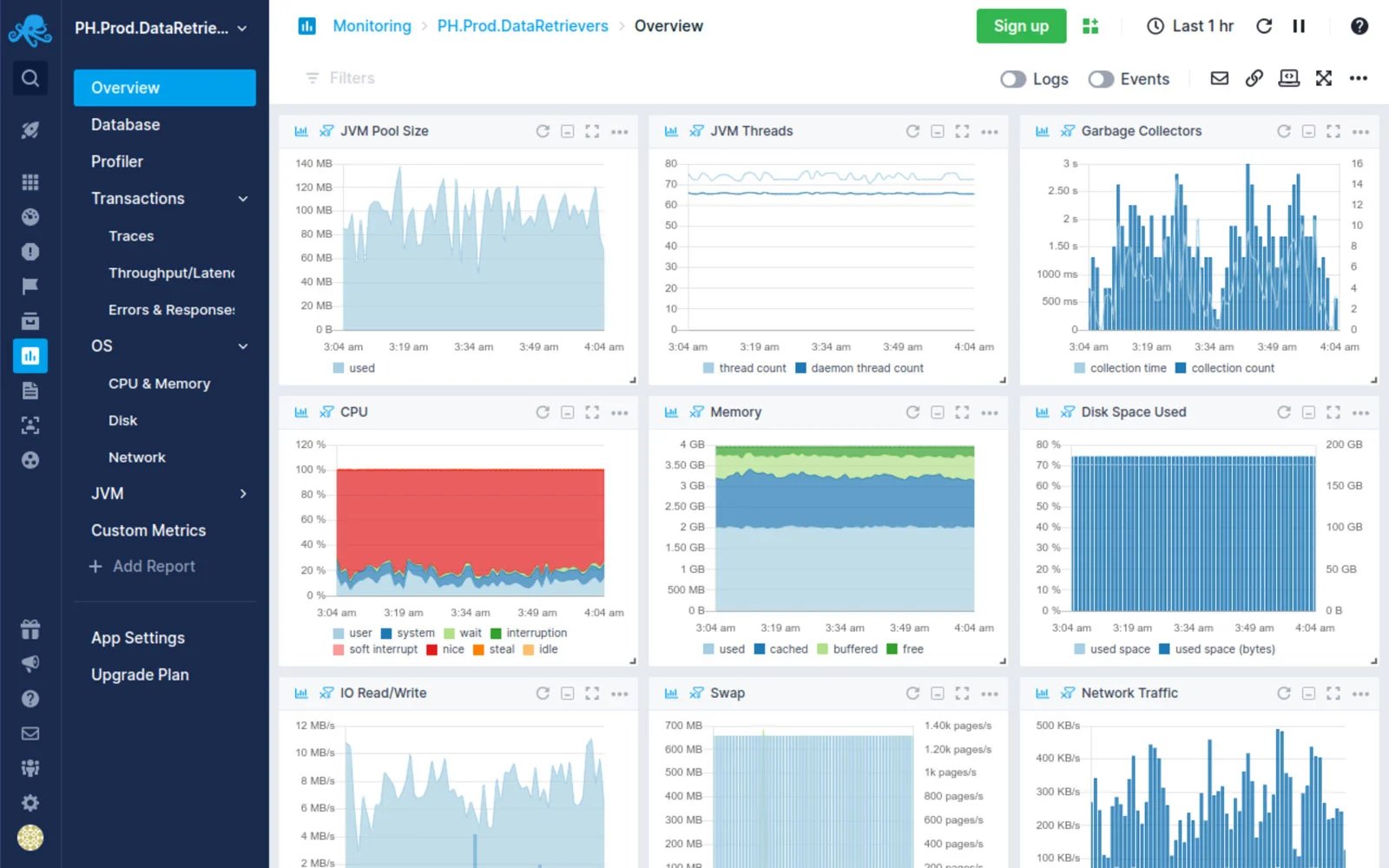
eG Enterprise IT Infrastructure Monitoring: An infrastructure monitoring package that links together resource dependencies to identify the root cause of performance issues. It runs on Windows Servers and Linux or take it as a SaaS package. It offers a 30-day free trial.
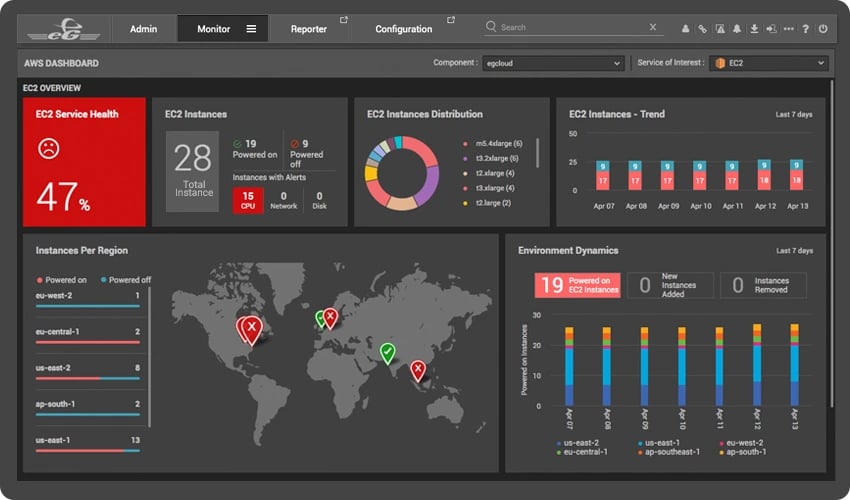
Site24x7 Server Monitoring: A cloud-based tool that monitors network traffic, servers, and applications, including off-site infrastructure. It offers a free trial.
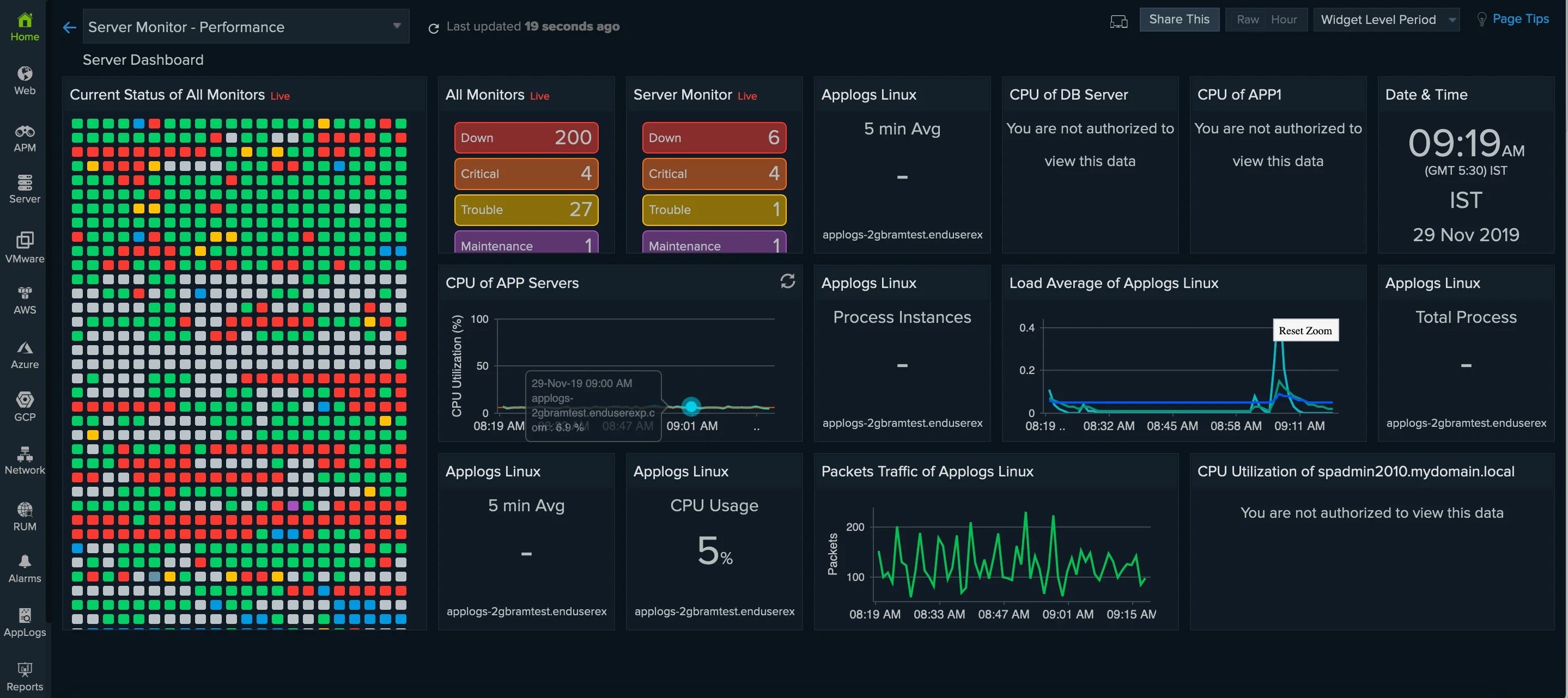
Factors to Consider When Selecting an Infrastructure Monitoring Platform
When selecting an infrastructure monitoring platform, there are several factors to consider.
Here are some of the most important ones:
Scalability: The tool should be able to scale with your infrastructure and handle the volume of data generated by your systems.
Ease of use: The tool should be easy to install, configure, and use. It should also provide a user-friendly interface for monitoring and troubleshooting.
Flexibility: The tool should be flexible enough to work with a variety of systems, including on-premises, cloud-based, and hybrid environments.
Customisation: The tool should allow you to customise and configure comprehensive alerts, dashboards, and reports to meet your specific needs.
Integration: The tool should integrate with other tools in your IT environment, such as incident management and ticketing systems.
Reliability: The tool should be reliable and provide accurate data. It should also have failover mechanisms in place to ensure continuous monitoring.
Security: The tool should be secure and protect your data from unauthorised access.
Cost: The tool should be cost-effective and provide value for money.
These are just a few of the factors to consider when selecting an infrastructure monitoring tool. For more information, you can refer to the Gartner Market Guide for Infrastructure Monitoring Solutions.
Final Verdict
In conclusion, infrastructure monitoring is an essential tool for any organisation that wants to ensure the reliability and availability of its entire infrastructure.
By monitoring the infrastructure, organisations can identify potential issues and take proactive measures to prevent them from becoming major problems. This can help save time, money, and resources in the long run, while also improving the overall performance of the system.
By partnering with aztech, businesses can benefit from their expertise in infrastructure monitoring and other IT services.
Aztech offer a range of support plans that can be customised to meet the specific needs of each organisation.
Aztech’s UK-based, 24/7/365 IT service desk is aligned to industry compliance, including ITIL and ISO. Aztech’s award-winning service team is certified with Microsoft, Cisco, VMware, and more.
If you’re interested in learning more about how aztech can help your business with a infrastructure monitoring solution, feel free to reach out to us.


